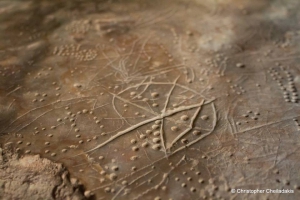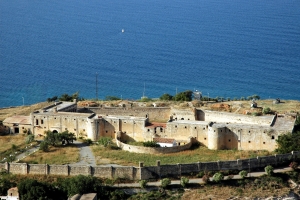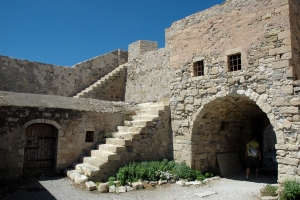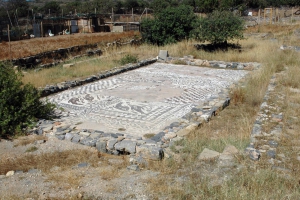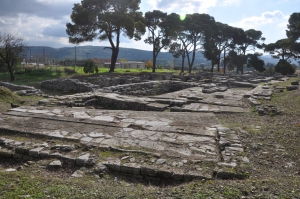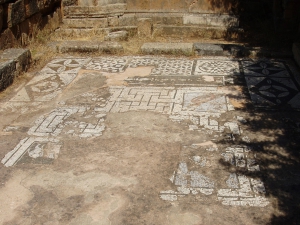Asfendou cave is located near the village of Sfakia, on a steep slope at position Skordalakia. The road connecting Asfendou with Kallikratis passes nearby and there is a plateau with an area of 2000 square meters in front. Skordoulakia cave is a very small rock shelter without woo much depth that barely fits two people and is located on a hillside at the beginning of the canyon Asfendou.
The fort of Intzedin is the only fort on Crete built by the Turks, located on the hill Kalami, 15km east of Chania and has a panoramic view to Souda Gulf. The fortress of Intzedin was built in 1872 by Reouf Pasha, on the same location where in 1646 the first Turks built a tower, chasing away the Venetians. It was the main defense construction of the port and was named "Intzedin" to honor the first born son of the Sultan Abdul Aziz Intzedin.
A living museum of historical memory that is worth seeing by any visitor of Crete that records the suffering of the Greek people during the German Occupation, is the galleries of Platanias. The shelter was built below the church of Agios Dimitrios at Pano Platanias by the requisitioned locals, for the Germans.
The fort Kales was built by the Venetians in the 13th century AD, to protect the town of Ierapetra from its enemies. In 1508 it was destroyed by an earthquake and the Turkish raids. The damage was not repaired, perhaps because it was very serious and there was no funding.
The collection of the Minoan antiquities in the Archaeological Museum of Heraklion is the largest in the world and the museum is considered the main Museum of Minoan civilization. It is classified as one of the largest and most remarkable museums in Greece and one of the most important in Europe.
Within short distance from Elounda, near the salt pans, we meet few remains of the ancient city Olous (most inside the sea) that was inhabited since the Minoan period. Olous was one of the hundred most important cities of ancient Crete with a maximum population of over 30,000 people.
The archaeological site of Ancient Tylisos is located 16km west of Heraklion, in a strategic location. Tylissos was a Minoan city that was flourished in 1650-1450 mainly because it was amid the road that led from Knossos to the west Minoan centers and Ida Mount. In 1450 it was destroyed, but was rebuilt and prospered until 1200.
Ancient Lissos was the seaport of Elyros and was built in a small valley between Sougia and Paleochora. It flourished from the Hellenistic period up to the 9th century, when it was destroyed by the Saracens. It was famous for the Asclepion, where patients from all over the island arrived to be healed from the thermal baths.





